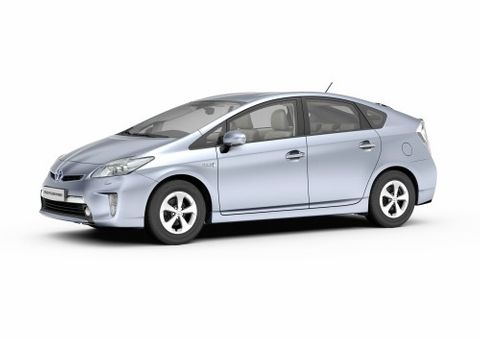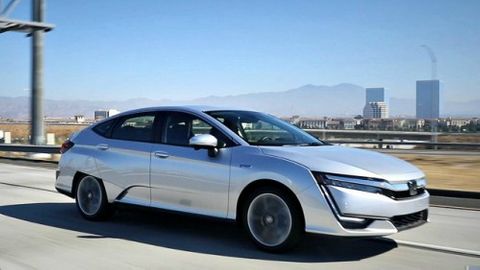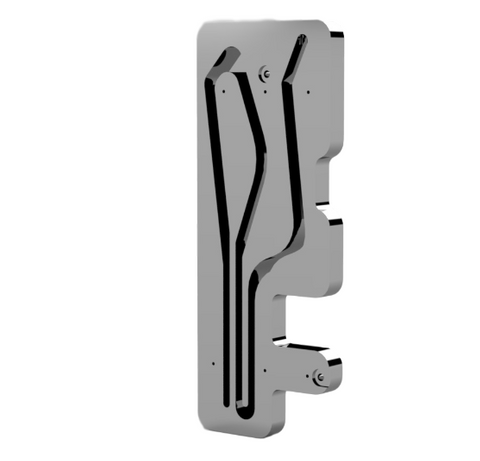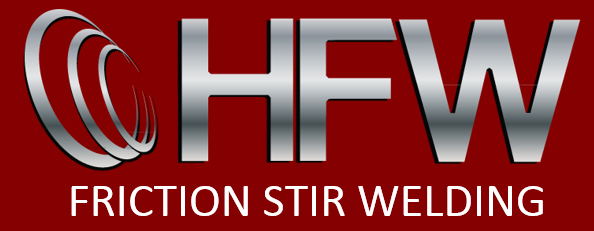Hybrid Electric Vehicle Products

Friction Stir Welding and machining Solutions for the Automotive Industry
Our extensive experience with automotive welding solutions is evident in the enormous variety of parts our machines produce. Those applications include battery trays, crush cans, electronic enclosures, cold plates, fuel tanks, and many more. Friction stir welding and machining may be fully integrated into automated production lines to handle this industry’s high volume demands.

How is HFW Solving Current Problems in the Automotive Manufacturing Industry
In recent years, the automotive industry has faced an increasing number of challenges. Customers in the automotive industry demanded a machine that could keep product costs low, meet rigorous standards, and keep up with changing trends. Tier 1 and Tier 2 automotive suppliers were looking for a solution that could stand up to harsh environments but also help them achieve their lean manufacturing goals. HFW was able to meet their needs with our high quality solutions.

Why friction stir welding is vital for hybrid electric vehicle applications
Friction Stir Welding is used across the automotive industry, utilized in creating large profiles, tailor welded blanks, and other high strength material applications such as crush cans and battery trays. Friction stir welding allows for the joining of smaller extrusions to make larger profiles. Larger profiles could be fabricated but can become very expensive. Friction stir welding provides a cost effective option for these large parts while holding tight tolerances and creating a very strong joint. Friction stir welding also enables the joining of low weight, high strength materials that are difficult to weld with traditional methods.
Many of these Friction Stir Welded parts require some final machining steps before they are ready to be put into assembly. HFW’s unparalleled CNC machining capabilities allow for final machining to be completed in house.

The Friction Stir Welding Process for the Hybrid Electric Vehicle Industry can be Utilized for:
- Battery Trays
- Electronic Enclosures
- Exhaust Gas and Re-circulation (EGR) Units
- Fuel Tanks
- Liquid Cold Plates
- Inverter Housings
- Mounting Brackets
Friction Stir Welding of Power Electronics Cold Plates
Friction Stir Welding (FSW) is a solid-state welding process that has been gaining popularity in recent years due to its ability to join dissimilar materials with minimal distortion and high strength. One area where FSW is particularly well-suited is the fabrication of cold plates for power electronics.
A cold plate is a key component in power electronics systems, as it is responsible for removing heat generated by the electronic devices and dissipating it into the surrounding environment. Cold plates typically consist of a base plate made of a thermally conductive material, such as copper or aluminum, and one or more layers of thermal interface material (TIM) that improve the thermal contact between the electronic devices and the base plate. The base plate and TIM layers are typically joined together using brazing or soldering, but these processes have several limitations when it comes to power electronics applications. Brazing and soldering can introduce impurities into the base plate, which can negatively impact the performance of the electronic devices. Furthermore, these processes can cause significant distortion in the base plate, which can make it difficult to achieve good thermal contact between the electronic devices and the base plate.
FSW, on the other hand, offers several advantages over brazing and soldering for joining cold plates. FSW is a solid-state process, which means that it does not introduce any impurities into the base plate. Additionally, FSW can be used to join dissimilar materials, such as aluminum and copper, which is not possible with brazing or soldering. Furthermore, FSW can be used to join thick materials, such as those used in power electronics cold plates, without causing significant distortion.
The FSW process begins by inserting a rotating tool into the adjacent region of the two parts to be joined. The tool is then moved along the joint while applying a downward force, which causes the material to flow and be joined together. The tool also stirs the material, which helps to create a homogeneous microstructure in the welded region.
One of the key challenges in using FSW for cold plates is ensuring good thermal contact between the electronic devices and the base plate. This can be achieved by carefully controlling the process parameters, such as the rotation speed of the tool and the welding speed, to minimize the amount of distortion in the base plate. Careful design of the manufacturing sequence for associated processes such as CNC machining, assembly and coating is also key to successful implementation of FSW in cold plate products.
In conclusion, FSW is a proven technique for joining cold plates for power electronics. Its ability to join dissimilar materials with minimal distortion, high strength and no impurities makes it a great alternative to traditional methods like brazing and soldering for power electronics applications.
For more information on FSW see our Friction Stir Welding page.
Friction Stir Welding of Aluminum Tailor Welded Blanks
Friction stir welding (FSW) is a solid-state welding process that can be utilized in the automotive industry for manufacturing tailor welded blanks (TWBs) in aluminum alloys. TWBs are made by joining two or more sheets of metal together, each with different thicknesses or compositions, to produce a single sheet of material with varying properties.
The resulting TWB sheet metal component has distinct areas that have been tailored to have different material properties, thicknesses, or coatings, depending on the specific application. This can provide a range of benefits, including:
- Weight reduction: By using different grades of aluminum with varying thicknesses, a TWB can be designed to be both lighter and stronger than a single sheet of uniform material.
- Cost reduction: TWBs can be made from lower-cost materials by using higher-grade materials only where they are needed. This can result in significant cost savings without sacrificing performance.
- Improved functionality: TWBs can be designed to have specific material properties in different areas of the component, such as increased strength, improved formability or better corrosion resistance, to improve overall functionality.
Friction stir welding can be employed to join the individual aluminum sheets together in one pass, creating a strong and continuous bond while avoiding the introduction of defects or weaknesses. FSW is also useful for joining dissimilar alloys or thicknesses, which may be difficult to join with conventional welding methods.
The use of friction stir welding to create TWBs provides greater control over the material properties of automotive components. FSW allows for more precise tailoring of material properties to meet the specific requirements of the application. Moreover, the FSW process can be utilized to refine the material properties of the TWB by inducing plastic deformation and grain refinement in the weld zone, resulting in improved strength and ductility of the TWB.
Overall, friction stir welding is an effective tool for the manufacturing of TWBs in the automotive industry, as it facilitates the creation of lightweight, robust, and cost-effective components that can be tailored to specific requirements.
